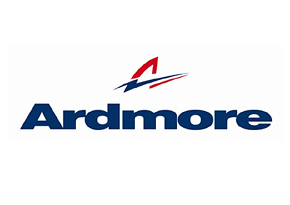- Case Studies
- Maggie's Oxford Centre, Oxford, Oxfordshire
Maggie's Oxford Centre, Oxford, Oxfordshire
Introduction
Maggie’s Centres were inspired by the late Maggie Keswick Jencks, herself a sufferer from cancer; they offer a place of refuge for people with cancer, their family and friends, where they can find free practical and emotional support, a chance to talk to professional staff and a place to meet others - or just sit for a cup of tea. Great value is placed on the power of architecture to lift the spirits and to help in therapy.
The first Maggie’s Centre opened in Edinburgh in 1966 and there are now 18 in the UK and abroad, many designed by eminent architectural practices. A new Maggie’s Centre, designed by Wilkinson Eyre, has opened in the grounds of Churchill Hospital, Oxford. It is set in a small but protected copse of mature trees which screen it from the massive hospital building nearby. This woodland setting inspired the building form; like a tree house, it is raised on timber columns, treading lightly on the landscape and appearing to float among the trees. Its shape, a series of fragmented planes wrapping round a tripartite plan, allows the structure to fit among the existing trees. Large areas of glass create a strong connection between the internal spaces and the surrounding treescape. Reflecting the woodland setting, timber was the natural choice of material for structure and fabric, to achieve sustainability and to create a warm and welcoming interior.
The tree house concept and the use of timber fulfilled a vital requirement of the brief, one common to all Maggie’s Centres, that visitors should experience a tranquil yet friendly interior, informal and decidedly non-clinical. Visitors cross a pedestrian bridge to reach the centre and once inside, find themselves in the welcoming heart of the building, an open plan space with a kitchen, dining table and wood-burning stove. Three informal open-plan wings emanate from this central space; one wing houses a library and office for practical information, another, with an external terrace, is for relaxing, sitting and group activities and a third is a wing of smaller, more intimate consulting rooms for emotional support and therapy.
All the spaces have a friendly and inviting domestic scale; some have large glazed walls looking out over woodland; others offer quiet spaces for retreat and reflection. Shafts of light fill the central spaces through clerestory glazing set above partition walls and through slotted openings in the roof. (There are also also slots in the floor to give views of the landscape below). The outside terrace and balconies lead to steps going down to the woodland to give visitors the chance to explore the landscape.
The timber structure
The domestic scale and informality of the brief are reinforced by the building shape; both form and structure are defined by a complex asymmetrical geometry, creating internal spaces that are full of movement and light.
The building is raised above the ground, supported on a series of splayed glulam columns which rise in nine three-pronged sets from screw foundations, their positions partly determined to avoid the roots of existing trees. They were designed to appear as informal clusters, reflecting the organic, non-linear tree forms alongside. Each 300mm diameter glulam column is inclined to follow the alignment of the beam it supports. The arrangement of paired opposing columns creates a series of portal frames; the angle of the columns reduces the structural spans while allowing the beams to extend to tapering cantilevers at the edges of the building. The portal frames are linked together by a series of grouped nodal points, where the columns emerge together from the ground, working together to create a rigid structure. While each timber column is unique to suit the sloping site, a standard galvanised steel cap connects column to beam through a slotted joint. This allows for a simple bolted connection and gives the necessary tolerance in construction while at the same time acting structurally as one.
The columns and tapered glulam beams support a floor of cross-laminated timber panels which creates a platform for the underfloor heating and the floor finish of engineered oak boards: it also provides together a robust perimeter edge for the connection of the cantilevered balconies and the pedestrian bridge to the road.
The roof is a folding, three-dimensional structure fabricated from Kerto LVL (laminated veneer lumber) structural ribs and a Kerto LVL skin, with a standing seam copper roof covering. At the eaves the roof extends to give shelter and solar shading to the external balconies; these are supported on a cantilevered steel frame and have timber decks.
External and internal walls are of insulated cross-laminated timber panels, lined externally with pressure-impregnated Kerto LVL. The external finish is a silver-grey Solignum stain which exposes the grain of the timber and gives protection, while in colour it reflects the natural silver grey of nearby spruce trees. A trellis of unfinished European oak slats provides screening to parts of the glazing.
Internally both walls and ceilings are lined with birch plywood.
Wilkinson Eyre, together with structural engineers Alan Baxter Associates, worked with specialist structural timber engineer and fabricator Metsawood to match the structural requirements of the building to its materials to maximise efficiency and cost. All the cross-laminated and LVL spruce timber components were predominantly sourced and prefabricated in southern Germany and waste was removed at source before transportation. Using specialist software which inputs directly into CNC cutting machines, a set of bespoke components with limited repetition was produced to fit the precisely defined geometry of the building.
Due to the location and nature of the building, the construction process needed to be rapid and the impact on the surrounding copse needed to be minimal. The use of prefabricated components reduced disruption to the site during construction and allowed the envelope to be constructed systematically following component deliveries to site.
Sustainability
Maggie’s Oxford is fundamentally sustainable in its location, its use of materials and its energy saving strategies.
The site, in a dense woodland copse, shelters the building from wind and direct south-facing sun and so reduces the need for heating and cooling in these weather conditions. The proportion of solid and glazed panels to the walls was determined to suit the orientation of each façade and 3D modelling was used to ensure that the projecting roof provided adequate solar shading. All rainwater is discharged locally within the site.
Sustainable materials are used throughout. The building structure is almost exclusively manufactured from sustainable softwood timber. All softwood and hardwood timber finishes are from FSC certified sources. The timber, together with the copper roof covering, are natural and self-weathering materials procured from known sources and both are fully recyclable.
The roof, floor slab and external wall U-values for the project are well above Building Regulations Part L compliance requirements. The walls achieved a U-value of 0.16W/m2K, more than a 50 per cent improvement on the requirements of Part L. This additional insulation reduces the building’s heating needs.
Approximately 50 per cent of the total energy use of the centre (including equipment use) is from renewable sources. It has a projected EPC rating of A, with an asset rating of 25 for energy efficiency and annual emissions that represent a greater than 30 per cent improvement over current target rates.
A closed-loop ground source heat pump uses renewable energy to heat the building and provide hot water. The ground source pump provides under floor heating, with locally zoned controls for individual room adjustment. All occupied spaces are naturally ventilated to Building Regulations Part F.
The lighting is designed to limit evening light pollution to sensitive wildlife habitats nearby. Where possible, low energy LED light fittings were used, with local switching operated by users of the building.
June 2014
Year Published:May 2016
Building Type:Cancer support centre
Location:Oxford
Client:Maggie’s
Architect:Wilkinson Eyre
Structural Engineer:Alan Baxter Associates
Specialist Structural Timber Engineer:Metsawood
Mechanical and Electrical Engineers:K J Tait Engineers
Main Contractor:Jacksons Contracting Limited
Joinery:Roger Kendrick Joinery
Timber Supplier:Merk Timber
Timber Elements:structural frame, floors and walls, internal wall and ceiling linings, external cladding, external screens
Timber Species:Norway spruce, white fir, Scots pine, European larch, Douglas fir, Swiss stone pine, European oak, birch plywood, Scandinavian kiln-dried softwood
Suggested Reading
Specifying externally exposed structural timber
This Wood Information Sheet (WIS) looks at some of the factors to consider when specifying a desired service life for structural timbers that are to be exposed outdoors but not in contact with the ground.
This WIS addresses general principles of structural design only, giving an overview of the...
24/11/2017
Standards Update October 2017
An update of British, European and International Standards relating to timber, including new and revised Standards, those withdrawn or amended and drafts now available for public comment, updated bimonthly.
30/10/2017
List of British Standards October 2017
A list of British Standards which relate directly to timber, updated bimonthly.
30/10/2017























